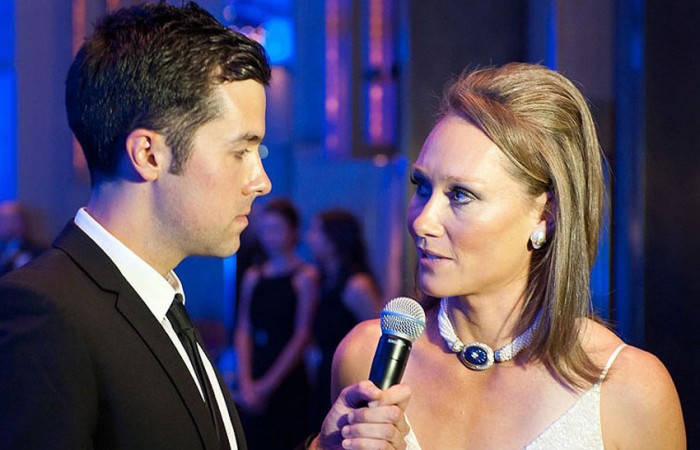Stosur reflects on medal-winning season
As she prepared for the Newcombe Medal Australian Tennis Awards, Sam Stosur paused to reflect on the season that saw her take home the ultimate prize.
Melbourne, Australia, 4 December 2012 | Matt Trollope

When Sam Stosur’s name was announced as the Newcombe Medal winner for 2012 – marking the third straight year she had been recognised as Australia’s most outstanding elite player – the 28-year-old took the audience at Melbourne’s Crown Palladium Ballroom on a journey back in time.
“I had a dream when I was a little kid to be doing what I am doing today,” she said in her acceptance speech.
“When I was 11 years old, I wrote it down on a piece of paper for a school project for the time capsule that the school was putting into the ground … On the piece of paper, it said I wanted to be a professional tennis player, go the Olympics Games by 2008, win a Grand Slam and hopefully one day be World No.1.”
Stosur achieved the biggest of those ambitions – a major title – at the 2011 US Open with a stunning finals defeat of Serena Williams in New York. And while 2012 may not have provided the same kind of exhilarating highs, the world No.9 said that upon reflection, she had plenty to be proud of.
“Probably this year I didn’t feel like there were any major highlights, like there was no US Open win to put an extra spring in your step, but after taking a few weeks off and being able to look back at the year on the whole, I am very happy with it now, and still finishing in the top 10 was another great achievement,” she said.
Those weeks off have seen Stosur return from a gruelling post-US Open swing – taking in events in China, Japan, Russia and Turkey – to completely recharge her batteries on Australian soil. The Queenslander spent a week on the Gold Coast catching up with friends and family, sandwiched between two weeks at her home in Sydney, where she relaxed on the couch watching the cricket and indulging in some home cooking.
Despite returning to the gym after those three weeks off to begin fitness training ahead of the 2013 season, Stosur said she still hadn’t touched a racquet since losing her final match of 2012 to Maria Sharapova in Istanbul.
That match, a 6-0 6-3 drubbing at the hands of the world No.2, was a rather uncharacteristic loss during a year marked by general consistency and the ability to bounce back from disappointments.
“I won quite a few matches this year where I was behind or down or not playing well and was able to turn it around, whereas sometimes in the past that had been a real struggle for me,” Stosur noted.
“Obviously the French Open semifinal was a highlight and a bit of a disappointment (she lost to unfancied 24th seed Sara Errani) at the same time. I think once I got into that tournament I felt like I could have done really good things, but semis now when you look back is still pretty good.
“(Reaching the) quarterfinals in New York I was very pleased with after having a pretty long disappointing time over the grass (Wimbledon and the Olympics) where I didn’t play well at all … You’re not going to play well all year, but you’ve got to be able to bounce back, and I thought I did that quite well this year.”
Stosur’s impressive Grand Slam performances in Paris and New York were complemented by WTA finals appearances in Doha and Moscow, three tournament semifinals – Charleston, Tokyo and Osaka – and another four quarterfinals. These performances helped her to maintain a top 10 ranking for the third straight year, something no Australian woman has managed since Wendy Turnbull from 1982 to 1984.
Her form in Fed Cup was imperious, with the Queenslander going undefeated in four singles rubbers throughout the year and helping guide Australia to a remarkable upset of Germany on clay in Stuttgart, a result that elevated the Aussies into the elite eight-nation World Group for 2013.
In fact, the only truly low point was her Australian summer, which she described as “a bit of a disaster”. Despite being pleased with how she rebounded following the disappointment of early exits in Brisbane, Sydney and Melbourne – she reached the Doha final just a fortnight later – she would much prefer a successful hardcourt swing in front of her home fans.
“One of the biggest things (this coming summer) is just to be open about how I’m feeling with the people around me. If I am nervous or feeling uptight about things, probably (I need) to express it a little bit more and get it out there so I can actually use the people around me for help, and not try and pretend it’s not happening if it is,” she said.
“(I want to) go out there and really try and enjoy it – I think sometimes that can get lost when you obviously want to play as best you can in your home tournament. You definitely want to do that, but I think you can’t place any more importance on it (matches at the Australian Open) than any other match throughout the year.”
The good news is for Stosur, the only way she can go from there is up.
And with ever-increasing experience and comfort on the big stage, and the aforementioned improved ability to find a way to win even when not playing her best, home soil may be a happier hunting ground in 2013 for the toast of Australian tennis.